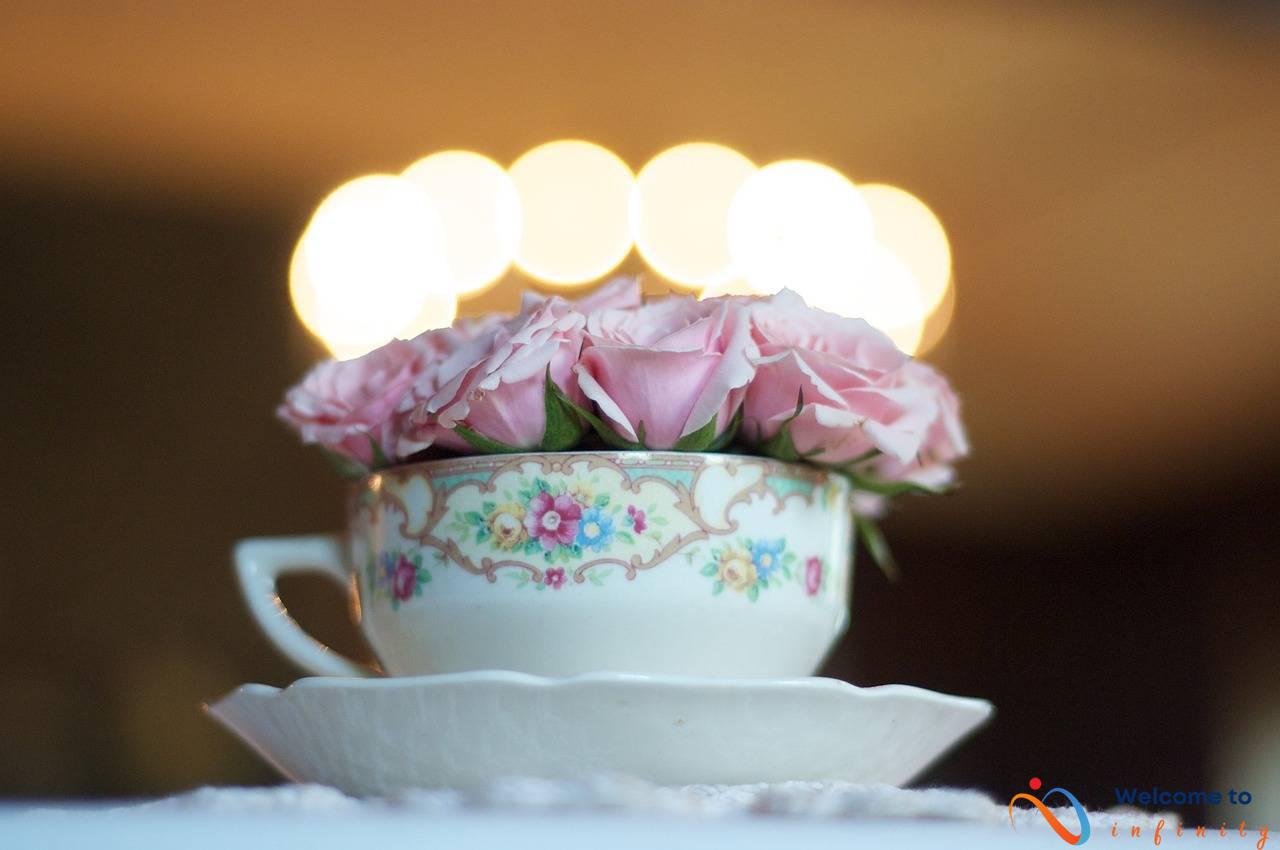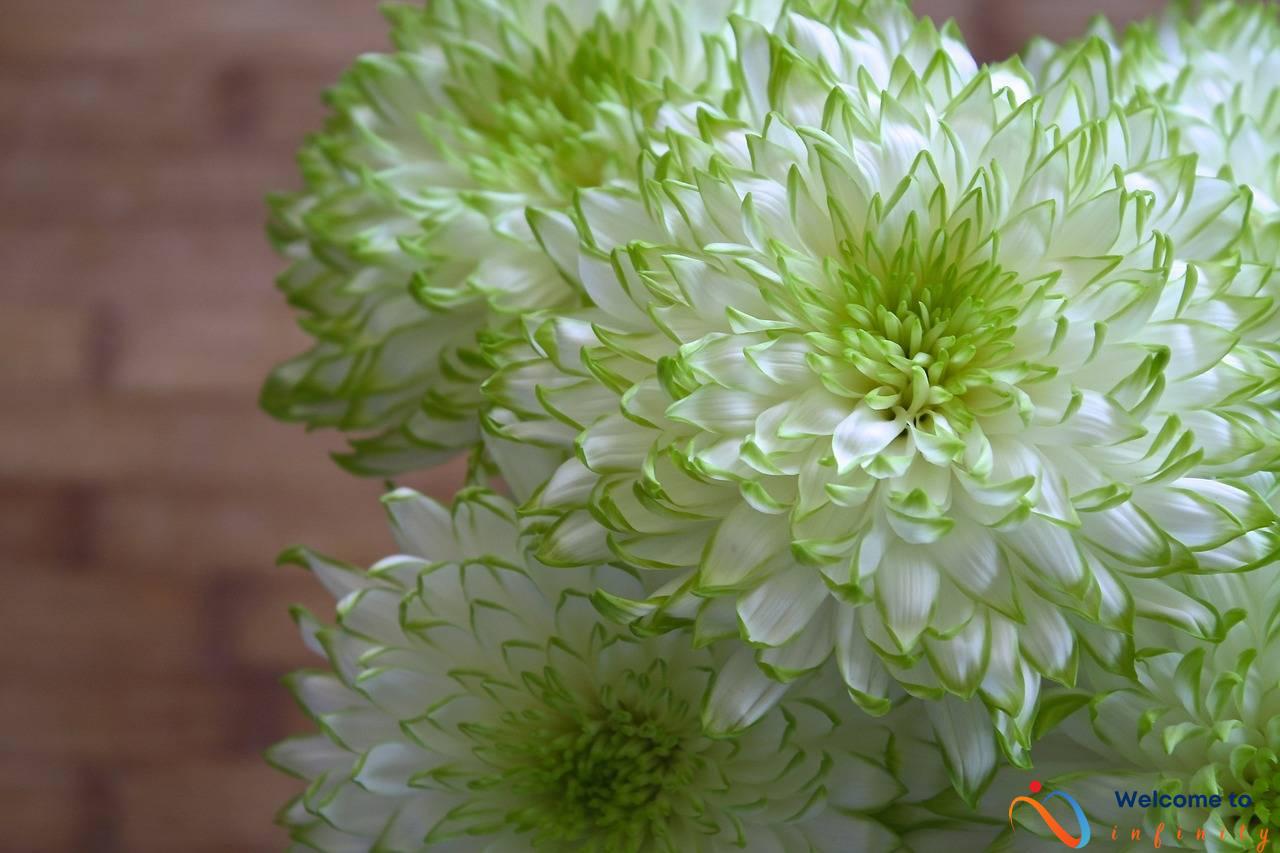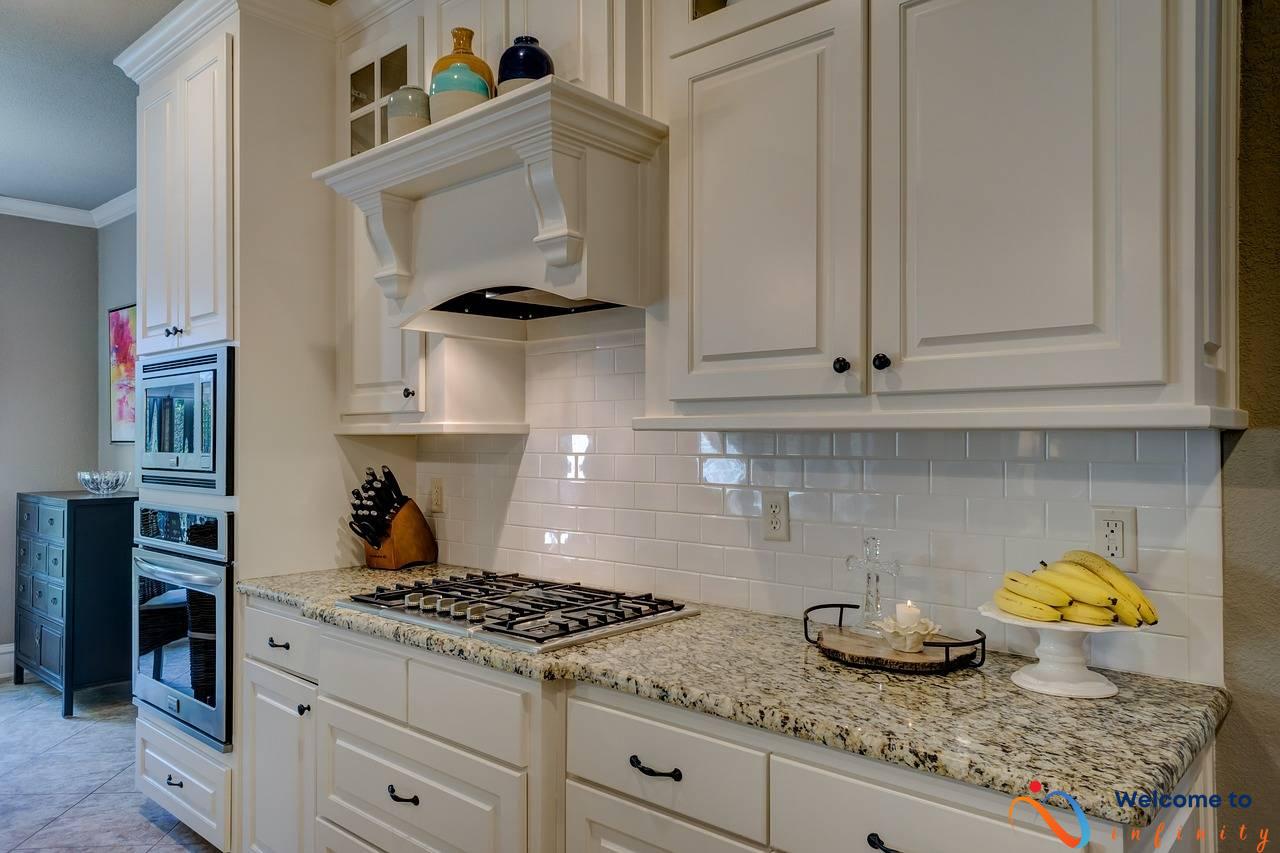If you're looking for a timeless and versatile interior design style, then transitional home decor may be the answer. This type of decor is all about blending traditional and modern elements, which creates a well-balanced and inviting space. By incorporating vintage and contemporary pieces, transitional decor creates a space that is both elegant and comfortable.
The main defining element of transitional home decor is the use of a neutral color palette. Neutral tones such as beige, gray, and white are the foundation of transitional design, providing a canvas for the mixture of styles and eras. Using a neutral color scheme creates a sophisticated and calming environment, and allows the other design elements to stand out.
The key to choosing the perfect neutral color for your home is to consider the undertones. While these colors may seem simple, they can have warm or cool tones that can change the mood of a room. Remember that neutral colors should be complementary and not matchy-matchy.
As important as it is to choose the right neutral color, it's also crucial to add interest and dimension to the space by complementing the neutral tones with different textures and patterns. Layering patterns and textures gives depth and richness to a space, and works particularly well with transitional design. Mixing different materials such as wood, metal, and upholstery creates a cohesive look.
- When selecting furniture and lighting, look for a mix of traditional and contemporary pieces
- Repurpose old furniture items to give them a new life and add character to your space
- Choose lighting that works for both ambiance and functionality
- Accessorize with artwork, rugs, and decorative accents to add the final touches to your transitional home design
With a little creativity and an eye for detail, anyone can achieve a beautiful and welcoming space with transitional home decor. So mix those old and new pieces, layer your textures, and choose your neutral tones carefully to create a space that reflects your personality and style!
What is Transitional Home Decor?
If you want to create a beautifully balanced home that merges old and new, transitional home decor is the perfect style for you. But what exactly is transitional home decor?
Transitional home decor is a popular interior design style that combines traditional and modern elements to create a harmonious and sophisticated space. The style is characterized by clean lines, smooth textures, and a neutral color palette that creates a calming and welcoming atmosphere.
One of the defining elements of transitional home decor is the use of neutral colors. The color palette is often inspired by nature and includes shades like beige, ivory, gray, and taupe. Neutral colors serve as the foundation of the transitional design, but they need not be dull or boring. Instead, they create a blank canvas that allows you to add interest and dimension through furniture, lighting, and decorative accents.
Another key element of transitional home decor is the seamless blending of styles and eras. You can incorporate vintage and modern elements together by layering with textures and patterns, blending decorative accents, and selecting transitional furniture and lighting. The aim is to create a cohesive look that is both timeless and fresh, resulting in a space that you can enjoy for years to come.
- Neutral color palette creates a calming and welcoming atmosphere
- Use of clean lines and smooth textures
- Blending of traditional and modern elements
- Incorporating vintage and modern elements together
- Cohesive look that is both timeless and fresh
Neutral Color Palette
If you are looking to create a seamless and harmonious home, the neutral color palette is the way to go. Neutral colors like beige, gray, black, white, and cream are the foundation of transitional design. They have a timeless and classic quality that can blend perfectly with modern and vintage decor elements.
Neutral tones are often considered as safe and boring, but with the right combination of shades, textures, and patterns, they can add depth and interest to any space. The key is to select the right shade that complements the existing decor and highlights the functional and architectural features of your home.
When choosing the right neutral shade, consider the undertones and intensity of the color. For example, beige with a pinkish undertone can be warmer and cozier than beige with a greenish undertone, which can appear more earthy and subdued. Neutral shades also have different levels of brightness and saturation, so it's essential to test the color in different lighting and angles to see if it matches your vision.
One of the benefits of using a neutral palette is that it allows you to play with different textures and patterns without overwhelming the space. You can add interest and dimension to neutral rooms by layering different fabrics and materials like silk, linen, leather, and wool. The combination of smooth and rough materials can create a tactile and inviting atmosphere that balances comfort and style.
- Using rugs or carpet with graphic patterns or geometric designs for a modern look
- Adding throws or cushions with faux fur, knitted, or quilted fabrics for a cozy vibe
- Using accents in metallic, glass or shiny finishes to underline modernity and sophistication
Neutral colors are a perfect choice for any style, but they are particularly well-suited for transitional decor because they allow you to merge different eras and styles seamlessly. Whether you want to combine vintage and modern elements or mix traditional and contemporary styles, neutral shades can provide the common ground that ties the elements together.
Choosing the Right Neutral Color
When it comes to choosing the right neutral color for your transitional home decor, the options can be overwhelming. The key is to choose a shade that compliments the rest of your home furnishings. Keep in mind that not all whites, greys, and beiges are created equal. Some may lean toward warm undertones, while others have cool undertones.
Consider the lighting in the room you are selecting the color for as well. A color that looks great in natural light may appear different under artificial lighting conditions. It is also essential to test the color in the room before committing to it. paint a small section and observe how it looks at different times of the day.
If you're unsure about which neutral shades will work best for your home's style, start with Benjamin Moore's recommended transitional colors. Some excellent options include:
- Revere Pewter
- Edgecomb Gray
- Balboa Mist
- Collingwood
- Classic Gray
Take your time when selecting the right color and trust your instincts. With a bit of patience and experimentation, you'll find the perfect neutral color for your transitional home decor.
Complementing Neutral Colors
Complementing Neutral Colors
Neutral colors may seem boring at first, but they serve as an excellent base for creating a timeless and elegant look in your home. However, to keep neutral spaces from looking flat and uninspired, it's important to incorporate complementary hues and textures. By doing so, you add intrigue and depth to your home's aesthetic.
One way to add dimension and interest to a neutral space is by layering different textures. Mixing soft fabrics with rough, tactile materials, like leather or jute, creates a balance that is visually pleasing and adds warmth to the space. Incorporating textiles with pattern, such as a sheepskin rug or a geometric throw pillow, can also give depth and visual interest to a neutral room.
Another approach is to add pops of color that complement the neutral tones. For instance, blues and greens work particularly well with beige, while shades of grey and black pair well with creamy whites. These colors can be introduced through accent pieces such as vases, picture frames, or even artwork. With the right pops of color, you can keep a neutral space from feeling monotonous while maintaining its sophisticated feel.
Lastly, don't be afraid to mix and match different neutral colors within a space. While it's important to keep a cohesive design, incorporating different shades of beige and grey adds depth and interest to a room. Just be sure to keep one dominant neutral color while using others as accents. By following these tips, you can create an elevated and sophisticated neutral space that is far from dull or boring.
Combining Styles and Eras
Transitional home decor is all about blending the old and new to create a timeless and balanced design. A key aspect of this style is the combination of different styles and eras to form a harmonious whole. Mixing modern elements with vintage pieces is the key to achieving a transitional look.
One way to combine styles is by layering textures and patterns. Mixing different textures such as plush fabrics, chunky knits, and sleek metals creates a sense of depth and interest in a room. Pairing bold patterns with more subdued ones adds structure and balance to the overall design.
Blending decorative accents from different eras can also create a unique look. Combining contemporary artwork with classic sculptures, for example, can give a room an eclectic feel. Similarly, mixing mid-century modern furniture with industrial-inspired pieces can create a sophisticated yet edgy aesthetic.
Another way to successfully marry past and present is by using color. Neutral tones such as beige, grey, and taupe are the foundation of transitional design and work well as a base for different elements to shine. Bold pops of color in accessories or artwork can add personality and vibrancy to a space without overpowering the overall design.
Incorporating vintage and modern elements into your transitional home decor is about balance and intentionality. By layering textures and patterns, blending decorative accents, and using the right color palette, you can create a look that is both classic and contemporary.
Layering with Textures and Patterns
To achieve a beautifully balanced transitional home decor, layering with textures and patterns is an essential element. The goal is to create a cohesive look by pairing different textures and patterns that complement each other. Using too much of the same texture or pattern can make a space look flat and uninviting, but combining different ones can add depth and interest to a room.
When layering textures, consider different textiles such as wool, silk, linen, and cotton. These fabrics can bring warmth to a space and add dimension. For example, pairing a plush wool rug with a smooth velvet couch can create an inviting living room. It's important to play with different scales, too – pairing a small-scale pattern with a larger one can create balance in a space.
When it comes to patterns, try to mix patterns of different sizes and shapes. Pairing a large-scale floral pattern with a smaller stripe or geometric print can create a harmonious look. Using neutral colors such as beige, gray, and cream can help balance out the patterns and keep the room from looking too busy.
Layering with textures and patterns can also be achieved through accessories and decor. Adding a textured throw blanket to a smooth leather armchair or draping a patterned pillow on a solid-colored sofa can instantly add interest to the space.
In conclusion, layering with textures and patterns is a key component of transitional home decor. By combining different textures and patterns in a thoughtful way, you can create a cohesive and inviting space that is both stylish and comfortable.
Blending Decorative Accents
Blending decorative accents is a crucial aspect of transitional home decor. Merging old and new pieces can create a unique and visually interesting space. However, it's essential to do it right, so the decor doesn't look haphazard or disjointed. Here are some tips to help you blend decorative accents in your transitional home.
Firstly, mix and match decor styles and eras thoughtfully. Don't randomly place items that don't complement each other on surfaces or walls. Instead, group similar items together, and balance them with opposing decor elements. For instance, a vintage lamp paired with a modern table or a rustic exposed brick wall enhanced by a sleek chrome chandelier.
Secondly, pay attention to colors and patterns. Stick to a neutral color palette, but layer textures and patterns to add depth and interest to the space. For instance, combining a plush ivory throw with a woven beige rug or a bold geometric pillow on a solid gray sofa.
Thirdly, be intentional with decorative accents placement. Group pieces together in odd numbers like three or five to create visual harmony. Also, vary the scale of items like small to large decorative items, or vice versa, to produce a compelling focal point.
Finally, curated collections of decor items work excellently in transitional home decor styles. Create a theme and mix different pieces that complement each other while showcasing your personality. For instance, a grouping of unique antique clocks, vintage cameras, or abstract art pieces.
Blending decorative accents is a fantastic way to merge different decor styles and eras to create a beautiful and balanced transitional home decor. Using these strategies will help you effortlessly and seamlessly combine different accents in your home, producing a cohesive and visually interesting decor.
Transitional Furniture and Lighting
Transitional furniture and lighting are crucial elements for achieving a well-balanced transitional home decor look. When it comes to selecting furniture, avoid overly ornate furniture with intricate details and opt for streamlined pieces with simple and clean lines. Look for furniture that incorporates both vintage and modern design elements, such as a classic wingback chair in a neutral color but with a modern, sleek silhouette.
It's also important to focus on the materials used in the furniture. Wood and metal are common materials used in transitional furniture, but it's essential to avoid anything too heavy or rustic. You want your furniture to be functional and stylish, but not overpowering or too elaborate.
As for lighting, consider functionality and ambiance when selecting fixtures. Lighting is a crucial part of transitional design and can make or break the overall look. Look for light fixtures that complement your furniture and decor, and reflect the neutral color palette of your space. Incorporate both overhead lighting and accent lighting to create a layered effect that emphasizes the depth and dimension of the room.
When selecting lighting fixtures, opt for those that have a simple and clean design with a touch of elegance. Stay away from ornate or overly fussy designs. Incorporate different types of lighting, such as floor lamps, table lamps, and sconces to create a warm and welcoming space.
Combining vintage and modern elements is also an excellent way to add depth and character to your transitional home. Repurpose old furniture and give them a new life by refinishing or reupholstering them. This will add unique charm to your space without losing the cohesive look you're trying to achieve.
In conclusion, selecting the right furniture and lighting is crucial to achieving a well-balanced transitional style. Keep it simple and clean with a touch of elegance, and remember to incorporate both vintage and modern elements for a unique and sophisticated look.
Rework Old Furniture
If you're looking for a budget-friendly way to incorporate vintage pieces into your transitional home decor, try repurposing or upcycling old furniture. Not only will it save you money, but it also adds a unique touch to your space.
Start by assessing the condition of the furniture piece. Does it need to be sanded, painted, or reupholstered? Decide what style or function you want to give the piece, then get creative with your modifications. For example, a vintage dresser can be transformed into a stylish TV stand, or an old ladder can serve as a bookshelf.
If you're new to DIY, don't worry. There are plenty of tutorials and inspiration online to help guide you through the process. And remember, imperfections can add charm to a vintage piece. Don't feel pressure to make it look absolutely perfect.
When selecting vintage furniture to rework, keep in mind the overall style and palette of your transitional home decor. You don't want the piece to clash or feel out of place. By reworking old furniture, you can create a truly one-of-a-kind space that reflects your personal style.
Lighting for Ambiance and Functionality
Lighting is a critical component of transitional home decor as it serves both functional and decorative purposes. The right lighting can create a warm and inviting ambiance while also highlighting key design elements of the room. When selecting fixtures for your space, consider both form and function.
Start by assessing the natural light in the room. If the space is naturally dark, opt for light fixtures that provide ample illumination to brighten up the space. In contrast, if the room has lots of natural light, consider fixtures that are more for ambiance than function.
Chandeliers, pendant lights, and table lamps are all popular choices for transitional design. When selecting fixtures, consider the materials used in the piece and how they complement the other design elements in the room. Mixing materials like metal, glass, and wood can add visual interest and texture to space.
In addition to selecting the right fixture, consider the type of light bulb used. Soft white bulbs provide a warm and cozy ambiance, while daylight bulbs offer a brighter, more energetic feel. If you have specific tasks to perform in the room, consider adding task lighting such as desk lamps or reading lights.
Finally, don't be afraid to get creative with your lighting choices. Incorporating unique and unexpected fixtures can add character and charm to your transitional design. Consider using statement pieces such as oversized pendant lights or bold floor lamps to make a statement in the room.
In summary, lighting is a crucial component of transitional design. When selecting fixtures for your space, consider both function and form, mix materials for visual texture, and don't be afraid to get creative with your lighting choices. By incorporating the right fixtures, you can create a warm and inviting ambiance while also enhancing the overall aesthetic of your transitional home decor.
Final Touches and Decor
When it comes to designing your transitional home, the final touches and decor are just as important as the foundational elements. These details can tie the entire space together and bring your vision to life. To help you add the perfect finishing touches to your home, here are some ideas to consider:
One of the best ways to enhance the overall aesthetic of your transitional space is by incorporating artwork and decorative accessories. You can choose pieces that complement your neutral color palette or ones that provide a pop of color. Consider adding unique sculptures, interesting vases, and decorative bowls that reflect your personal style and complement your home's design. A gallery wall is also a great way to show off artwork and photos in a cohesive and visually appealing way.
An often overlooked aspect of home decor is window treatments and rugs. They can be the perfect way to add texture, color, and warmth to your transitional home. When choosing window treatments, opt for simple and clean lines to maintain the simplicity of transitional design. For rugs, choose a classic pattern or texture that will blend seamlessly with your furniture and decor. You can also layer rugs to add dimension and interest to your space.
Adding books and plants is a effortless way to complete the look of your transitional home. Books can be used to create height and add depth to a room, while plants add a touch of nature and life. You can group books together on a bookshelf or coffee table and mix in plants to create a beautiful and harmonious display. Plants can also be used as focal points in a room and add color to your neutral space.
By adding these final touches and decor to your transitional home, you can create a warm, inviting, and functional space. Remember to keep things simple and balanced, and don't be afraid to infuse your personal style into your design choices. Whether you're looking to add character, warmth, or simply complete your space, these ideas will help you create a beautifully cohesive and harmonious interior that will stand the test of time.
Artwork and Accessories
Artwork and accessories are the final touches that can make or break your transitional home decor. When curating these items, it's important to keep in mind the overall style and color scheme of your space.
One strategy for selecting artwork is to choose pieces that are a mixture of old and new. Look for vintage paintings or prints that have a modern twist, or contemporary pieces with a vintage feel. When selecting accessories, consider incorporating items with different textures and finishes to add interest and dimension to the space.
To create a sophisticated collection of items, start by selecting a few statement pieces that will anchor the room. This could be a large painting or sculpture, or a unique vintage find. Then, layer in smaller pieces that complement the style and color palette of the room.
When it comes to arranging artwork and accessories, consider balance and composition. Avoid cluttering a single area with too many items, and instead distribute them throughout the room in a way that creates visual interest and flow. Group items with similar colors or themes together for a cohesive look.
Another way to enhance your space with artwork is by creating a gallery wall. This is a great option for smaller pieces or a collection of items that you want to display together. Choose a focal point for the wall and arrange the pieces around it, using similar frames or mats to create a cohesive look.
In addition to artwork, don't forget about the impact of accessories like vases, sculptures, and decorative objects. Again, select items that complement the style and color palette of the room, and arrange them in groupings for maximum impact.
Overall, selecting and arranging artwork and accessories is a fun and creative process, and is the perfect way to add the finishing touches to your beautifully balanced transitional home decor.
Window Treatments and Rugs
When it comes to transitional home decor, the right selection of window treatments and rugs can really take your space to the next level. As with all elements of transitional design, it's important to strike the perfect balance between old and new, while keeping things simple and sophisticated. Here are some tips for selecting the right textiles to enhance your transitional design aesthetic.
For window treatments, the rule of thumb is to keep things clean and streamlined. Look for simple, neutral curtains or blinds that allow plenty of natural light to filter through. Avoid heavy drapes or ornate valances, which tend to look too traditional or flashy. If you do opt for drapes, choose a light fabric like linen or cotton in a neutral shade like white or beige. This will help create a soft, airy effect in your space.
When it comes to area rugs, the same principles apply. Choose a rug with a simple, understated pattern in a neutral color like gray or tan. Avoid overly bright or colorful designs, as these can clash with the rest of your decor. If you're looking to add texture, consider a rug with a subtle geometric pattern or a shaggy pile. This will help add depth and interest to your space without overwhelming it.
Another important factor to consider when choosing textiles for your transitional home is material. Look for natural fibers like wool, cotton, or silk, which have a timeless quality and a durable, high-end feel. Synthetic or man-made fibers can often look cheap or artificial, which can detract from the overall sophistication of your space.
Overall, the key to selecting the right window treatments and rugs for your transitional home is to keep things simple, light, and understated. By choosing neutral colors and natural materials, you can create a timeless, sophisticated look that will stand the test of time.











